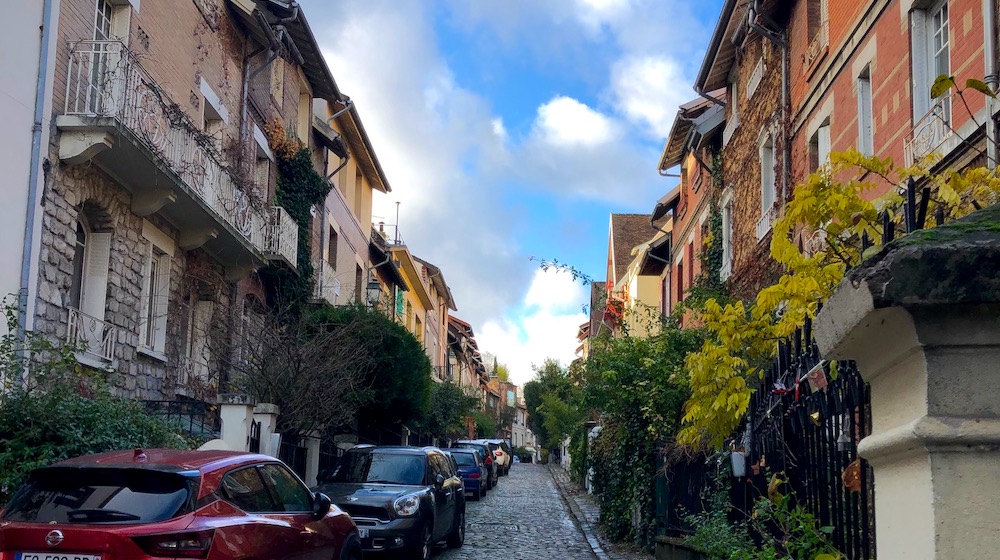THE WALK
This flowered walk will take you to the south of Paris (14th and 13th arrondissements), an unknown area full of hidden treasures.
You will start your stroll around the « Cité Internationale Universitaire » and the Montsouris Park, amongst the most beautiful gardens in the capital, before discovering two tiny hidden villages: la Cité Florale and the quartier des Peupliers (Floral City and Poplars district).
A walk also in memory of the Bievre, former river of Paris and tributary of the Seine. Flowing through the 13th and 5th arrondissement, it contributes until the 19th to the growth many industries and factories (laundries, tanneries, dyeing, …) before being covered and buried during Haussmann works, because too polluted and unhealthy.
THE ITINERARY
- Start walk at the level of Cité Universitaire stop (RER C or tram T3a)
- Enter the Cité Internationale Universitaire (University International House), campus welcoming over 10,000 foreign students and researchers housed in 40 « Maisons » named according to the country of origin. It is also a great and pleasant public garden.
- Enter the « Maison Internationale » building built in the 1930s which architecture is inspired by classic French style.
- Administrative center of the Cité Internationale, it is also a cultural place that hosts exhibitions, plays and many events.
- Follow the route you want, between greenery and architecture. The “Houses” you must not miss: The Deutsch-de-La-Meurthe Foundation (1921), The Dutch Pavilion (1928), the Swiss Pavilion (1932) made by Le Corbusier and historical monument, the House of Cambodia and the Pavilion du Brazil (1959).
- Get out and enter the Parc Montsouris. Built during Haussmann works (1878), it is one of the most beautiful public garden in Paris. An ideal place to relax with more than 1,400 trees, large lawns and many birds.
- The name Montsouris (“Mouse mount”) would come from the time when rodents proliferated in this area when the Bièvre still existed. In the old French, « Bièvre » was also synonymous with « Beaver ».
- Go to the west side of the garden and take Nansouty street. You will pass by two beautiful little streets lined with houses covered with wisteria: rue du Parc de Montsouris et Square de Montsouris. Square Montsouris, the painter Soutine lived at No. 35 from 1928 to 1930. The house at the end of the square (actually located 53 avenue Reille) has been made by Le Corbusier
- Cross the Parc Montsouris and go out now on the east side. Take rue Liard then rue Auguste Lancon. After about 200m, take rue des Glycines on your right. You enter the Cité Florale, a beautiful piece of countryside.
- It was built between 1925 and 1930 on dry up land from the Bièvre. Rue des Glycines, rue des Iris or Orchidées (Wisteria Street, Orchids, Iris) Floral City… earned its name!
- Enjoy those few streets before heading to an another flowered village : le quartier des peupliers (Poplars disctrict). To get there, take the rue Brillat-Savarin to place of Rungis, then rue des Fontaines Mulard, turn right onto rue de la Colonie as far as rue de l’Abbé Georges Hénocque (about 700 meters walk).
- Place ode l’Abbée Georges Hénocque, you are at the foot of the Butte aux Caille, and in the heart of the poplars district. The name “poplar” recalls that poplars grew throughout the Bievre.
- When Bièvre was filled, many housing estates were built. Head rue Henri Pape and rue Dieulafoy to see them.
- Go up rue du Moulin des Près and take square des peupliers on your left.
- This small private Villa (built in 1926) is an exquisite piece of countryside isolated from the rest of the city.
End of the walk. You can continue your walk on the beautiful Butte aux Cailles.

